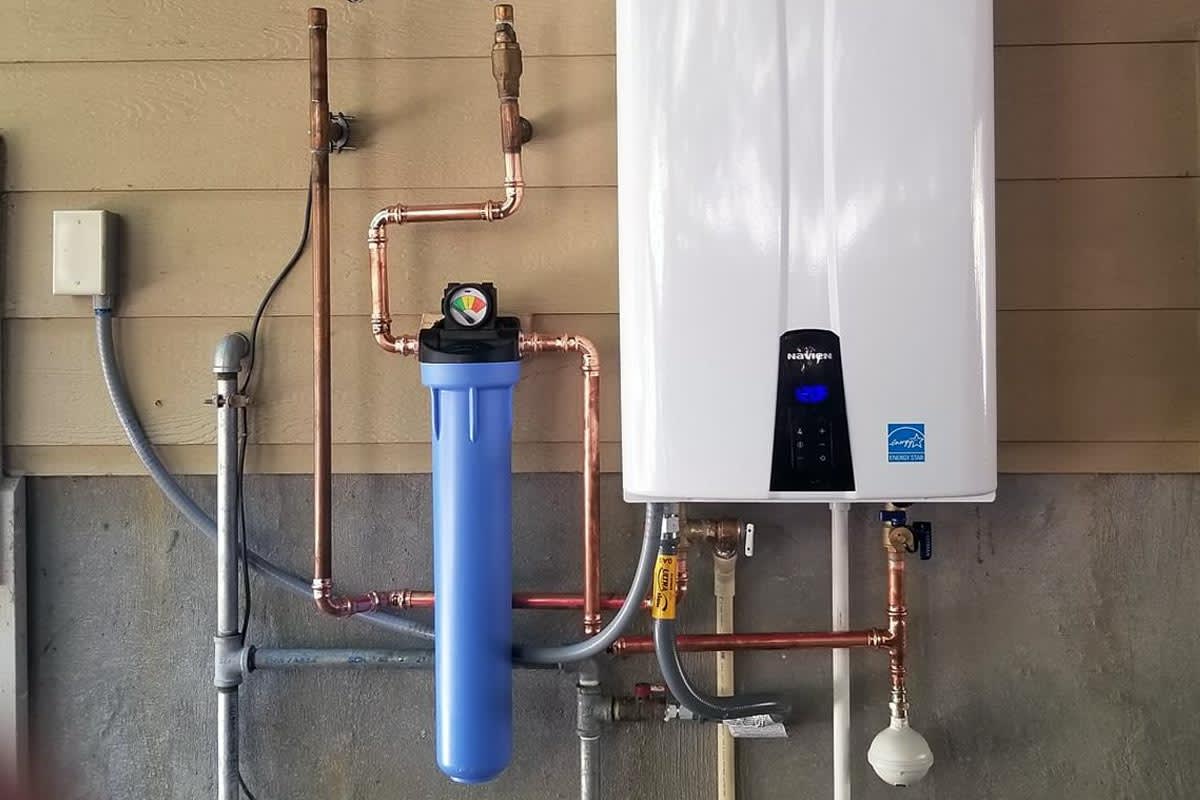Straightforward Methods to Maintain Your Home's Hot Water System EffectivelyEffective Ways to Care for Your Home's Hot Water System SuccessfullyStraightforward Ways to Maintain Your Home's Hot Water System Properly
Straightforward Methods to Maintain Your Home's Hot Water System EffectivelyEffective Ways to Care for Your Home's Hot Water System SuccessfullyStraightforward Ways to Maintain Your Home's Hot Water System Properly
Blog Article
The article author is making a few good annotation about Water Heater Maintenance Tips You Can't Afford to Forget overall in the article followed below.

Hot water is essential for everyday convenience, whether it's for a revitalizing shower or cleaning recipes. To guarantee your warm water system runs successfully and lasts longer, routine upkeep is vital. This article offers useful ideas and understandings on how to maintain your home's hot water system to prevent disturbances and pricey repair services.
Intro
Keeping your home's hot water system may seem difficult, however with a couple of straightforward actions, you can guarantee it operates smoothly for many years to find. This guide covers whatever from comprehending your hot water system to DIY maintenance suggestions and understanding when to employ professional help.
Significance of Maintaining Your Hot Water System
Regular maintenance not only prolongs the life expectancy of your hot water system however likewise ensures it operates efficiently. Neglecting upkeep can bring about lowered performance, greater power expenses, and even premature failing of the system.
Indicators Your Warm Water System Demands Upkeep
Recognizing when your hot water system needs attention can protect against major issues. Look out for indicators such as irregular water temperature, strange noises from the heating unit, or rusty water.
Flushing the Hot Water Heater
Flushing your hot water heater gets rid of debris build-up, improving efficiency and lengthening its life.
Monitoring and Changing Anode Rods
Anode poles prevent deterioration inside the storage tank. Evaluating and replacing them when worn out is essential.
Complex Issues Needing Professional Help
Examples consist of significant leaks, electric issues, or if your hot water heater is regularly underperforming.
Regular Specialist Upkeep Benefits
Expert maintenance can consist of extensive evaluations, tune-ups, and making sure conformity with safety and security standards.
Evaluating and Changing Temperature Setups
Readjusting the temperature settings makes certain optimum efficiency and safety and security.
DIY Tips for Upkeep
You can carry out several upkeep tasks on your own to keep your warm water system in leading problem.
Looking for Leakages
Regularly check pipes and links for leaks, as these can result in water damages and higher expenses.
Comprehending Your Warm Water System
Prior to diving into upkeep jobs, it's handy to recognize the fundamental components of your hot water system. Generally, this consists of the water heater itself, pipes, anode poles, and temperature controls.
Month-to-month Maintenance Tasks
Regular month-to-month checks can assist catch minor issues before they escalate.
Examining Stress Relief Valves
Evaluating the pressure relief valve ensures it works correctly and protects against too much pressure build-up.
Insulating Pipelines
Shielding warm water pipelines lowers warmth loss and can conserve energy.
When to Call a Professional
While DIY upkeep is advantageous, some issues require professional experience.
Verdict
Normal maintenance of your home's warm water system is vital for performance, long life, and expense financial savings. By following these suggestions and knowing when to look for professional assistance, you can ensure a dependable supply of hot water without unanticipated disturbances.
Water Heater Maintenance Tips
Test the TPR Valve
Shut off the power and the cold-water supply valve. Place a bucket under the pipe connected to the temperature-pressure-release (TPR) valve on the top or side of the tank. (This valve opens if the tank pressure gets too high.) Lift the valve’s tab to let some water out, then let go. If water keeps flowing, drain the tank partway, unscrew the old valve with a pipe wrench, and install a new one. Check the Anode Rod
Put a hose to the tank’s drain cock and let out a few gallons of water. Now fit a 1 1/16-inch socket onto the rod’s hex head on top of the heater (or under its top plate) and unscrew the rod. If it’s less than ½ inch thick or coated with calcium, buy a new one, wrap its threads with Teflon tape, put it back in the tank, and tighten securely. Use this segmented rod if headroom above the tank is limited. Drain the Tank and Wash Out Sediment
Drain the remaining water in the tank into the bucket, then stir up the sediment on the tank’s bottom by briefly opening the cold-water supply valve. Drain and repeat until clean water comes out of the hose. Close the drain cock, refill the tank, and turn its power back on. Adjust the Temperature
Find the temperature dial on the side of the tank and unscrew its cover. Adjust the dial to 120 degrees using a flathead screwdriver. For every 10 degrees the temperature is lowered, you can expect to save up to 5 percent in energy costs. Turn the water heater off or the thermostat down to its lowest setting if you plan to be away from home for more than three days. Insulate the Pipes
Buy some self-sticking 3/8-inch-thick foam pipe insulation that matches the pipes’ diameter. Slide the foam over the hot-and cold-water pipes as far as you can reach. Insulating the cold-water pipe prevents condensation in summer. Peel the tape and squeeze the insulation closed. If the pipe is 6 inches or less from the flue, cover it with 1-inch-thick unfaced fiberglass pipe wrap. https://www.thisoldhouse.com/plumbing/21016402/how-to-maintain-a-water-heater

We were guided to that editorial on How to Maintain Your Water Heater & Prolong its Life through a pal on a different domain. I beg you take the time to share this post if you enjoyed reading it. We recognize the value of reading our article about Tips on Maintaining a Water Heater.
Visit Site Report this page